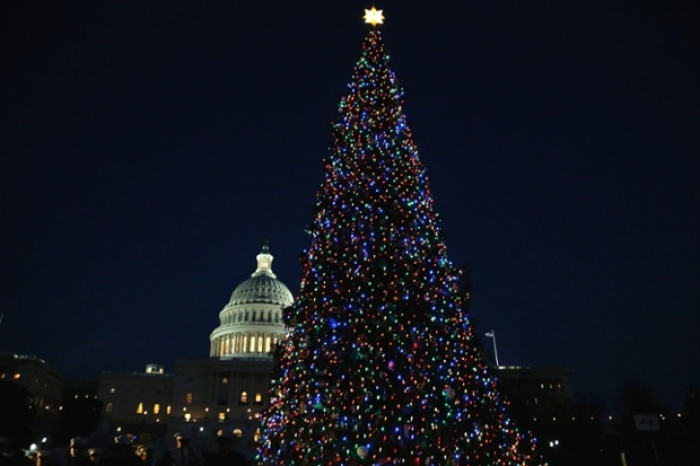Christmas 'Undoubtedly' Has Pagan Roots 'But Having a Tree Isn't Worshipping a Pagan Idol,' Proclaims Christmas Enthusiast

One month after "Kirk Cameron's Saving Christmas" hit theaters across the U.S., two experts added their own viewpoints on how the yuletide season's traditions came to be what they are today.
Cameron's latest film offered moviegoers unique explanations for traditions such as the Christmas tree, the nativity, and even the significance of the 25th of December.; firmly rejecting theories that Christmas was influenced by from paganism. Following the "Fireproof" star's findings, The Christian Post caught up with two additional sources who could further identify the exact origins and meanings for the season.
First, biblical scholar and author of "Does It Really Say That in the Bible" Katie Hoyt McNabb pointed out that the first Christmas celebration occurred over 50 years after the events in Scripture. Consequently, Christmas and its traditions, including feasts, décor, and songs, are commonly debated, even within Christian communities.
McNabb addressed some Christians' outcry on the "War on Christmas" which is echoed in Cameron's "Saving Christmas and understands why some believers refrain from celebrating the holiday.
"I don't know why we as Christians feel threatened into [carrying out] traditions and celebrations of Jesus' birth," McNabb began. "A long time ago, early Christians said, 'This event needs to be celebrated, but how?' And they brought forth all the things that made them happy and joyful," the theologian continued.
Although the use of evergreen trees and mistletoe originated in pagan celebrations, McNabb reviewed the renewed Christian meanings of the iconic Christmas symbols, identifying how they reflect Jesus Christ.
"I love that Christians down the road saw evergreens with leaves that never die - this represents Christ to me," she told CP. "And the holly refers to the thorns, the berries - blood. Candy canes are in a J-shape - the shepherd's crook, with the white indicating a sinless life, the thick red stripe representing red blood, and the three thin red stripes referring to the Trinity. We humans use imagery and tone and body language to communicate. Having other devices to lend shades of meaning offers deeper levels of understanding."
Furthermore, the Yale-educated theologian urges Christians to explore their own interpretations of the Bible as well as Christmastime.
"We have been given the Scripture because we need an anchor," McNabb said. "We may not understand it all, but one of the things we should all agree on is that the Bible has authority, it doesn't mean we have to agree on interpretation, because there are clearly different people talking, but only one spirit," McNabb concluded.
Also weighing in, a self-proclaimed Christmas expert from the U.K. James Cooper explained the origins of mistletoe, evergreens and holly in both Christian and pagan celebrations, pointing out that "there are undoubtedly pagan roots to some Christmas traditions." The Christian blogger has appeared on the BBC as well as Huffpost Live.
He also touched on the use of Christmas trees, holly, and mistletoe, for the celebration of Jesus' birth which were also used during "pre-Christian" mid-winter festivals such as the Winter Solstice, Yule and Saturnalia, to name a few. This, according to Cooper, "undoubtedly" links Christmas and pre-Christian (pagan) celebrations.
"But I also don't think that having a tree isn't worshipping a pagan idol," said Cooper to The Christian Post.
Serving as further proof that Christmas traditions may have elements lifted from pagan celebrations, McNabb said early Christians needed "common ground" to explain their faith to outsiders, complete with hooks and context. In other words, early Christians may have adopted pagan celebrations in order to evangelize.
"For example, the Apostle Paul went everywhere and did whatever he could, changing his story in order to find common ground so he could explain the story of Jesus," McNabb said.
In agreement with McNabb, Cooper said that Christmas was used as a "marketing tool" to attract people of pagan cultures in order to spread Christianity.
"When the Church was growing in numbers and in influence and power in the late Roman period, there was the existing festival of Saturnalia and I think they saw that if they could 'co-opt' it, that it was a powerful tool," the blogger told CP.
Both experts agree that while some Christmas traditions have pagan roots, the holiday was made anew after taking on a meaningful celebration of Christ's birth, as it is written in the Bible.





























